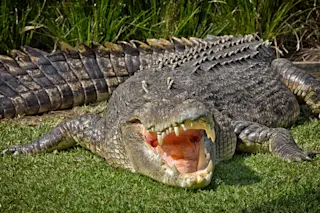Australia is home to some of the deadliest creatures on Earth. From snakes to spiders and scary sea creatures, this continent has it all. The inland taipan, for example, is known as the world’s most venomous snake. A 16-foot saltwater crocodile can make dipping your toes in the waters off Australia’s northern coast a spine-chilling event. And then there’s the box jellyfish, stonefish, blue-ringed octopus, Sydney Funnel-Web Spider and the great white shark, to name just a few. So it begs to question: How did the world’s smallest continent end up with so many killers?
According to Kristofer Helgen, a biologist and chief scientist at the Australian Museum, the continent lays claim to so many deadly creatures partially because of continental drift. “It’s the most isolated continent on the planet and it’s been drifting towards Asia ever since it separated from Antarctica 30 million years ago,” says Helgen.
A number ...















